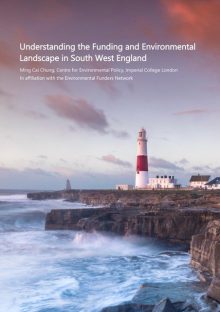Approaches for ensuring that grant applicants reflect upon the evidence
An increasing number of funders are asking applicants to reflect on the evidence underpinning proposals. We are aware of ten ways in which funders could ensure that evidence is considered by applicants planning conservation projects.
- Application form has a question asking about the evidence
A section in the application form states something like “If undertaking a conservation action, reflect on any evidence relating to its effectiveness”. This is the most straightforward approach and has proved to be highly effective. Disadvantages of this approach may be that it is seen as too bureaucratic or time consuming and makes the application too challenging. It may not be appropriate if most applications do not involve conservation actions or if decisions about actions are considered at a different stage.
Examples: Bat Conservation International, BirdLife International’s CEPF small grants for the Mediterranean hotspot and Preventing Extinctions Programme, Conservation Leadership Programme, John Spedan Lewis Foundation, Mohamed bin Zayed Species Conservation Fund, The National Trust, People’s Trust For Endangered Species, The Rufford Foundation, Whitley Fund for Nature, Woodland Trust, WCS Climate Adaptation Fund.
- Applicants are asked to describe their use of evidence somewhere within their proposal
This is a less formal version of approach (1), but without a specific section to complete. This may be perhaps more appropriate for smaller grants or for applicants less used to applying for funding.
Examples: Amphibian Survival Alliance, Aspen Trust, People’s Trust for Endangered Species, Future For Nature Foundation
- Second application stage asks about evidence
Some funders have an initial short application form, followed by a second stage of proposal development in which a subset of applicants provide further details of their project. Funders can ask for evidence of effectiveness of the proposal for projects that reach the second stage where this is relevant. This may have the advantage of reducing the work for the first stage. It also allows for a general application process for a wide range of grants, with only practical conservation grants requested to provide evidence in the second stage.
Examples: Endangered Landscapes Programme
- Asked to justify assumptions underpinning the Theory of Change
Many applications request a Theory of Change to elucidate how the proposed project is likely to result in the desired outcomes. Funders ask for an assessment of the evidence base for the assumptions underlying the theory of change.
- Grantees asked to report on evidence use as part of reporting
The grant application and contract state that it is expected that the decision making process will be evidence based. The grantees’ reports to the funder then describe how the evidence was used in decision making and why key actions were chosen. This approach is appropriate for projects where key decisions are made during the project rather than before the application is submitted.
- Funders check the evidence themselves
If assessing the evidence is considered too onerous or off-putting for applicants, the funder can decide to check the evidence for the actions proposed by applicants as part of the selection process.
Example: Future For Nature Foundation
- The evidence is considered during project co-development
Some funders may not use a straightforward application process but instead collaborate and codesign a project with potential grantees. The funder may then identify the evidence and discuss how to use this in project planning with the potential grantee.
Example: On the EDGE Conservation
- The process for using evidence is described
The applicant is asked to describe the process by which relevant evidence will be identified and considered during their project. This may be appropriate for complicated projects where numerous decisions have to be made.
- Applications for a programme comprising numerous projects describe how they will ensure that evidence is considered.
The grant may be to fund an organisation or a programme, who then run or fund a set of projects. Applicants are asked to describe how evidence use will be embedded in the project selection, probably using one of the approaches described above.
- Evidence use is included in the selection criteria with the the criteria made transparent to applicants before applying
A clear transparent process of expecting consideration of evidence makes it clear that only proposals considering evidence will be considered for funding.
Example: Woodland Trust, WCS Climate Adaptation Fund.
